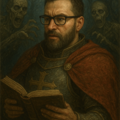But he could feel compassion for them, as he did for the other victims, and it was that he sought more than anything else: to mourn their deaths rather than holding onto his anger at their lives.
This book has been on my TBR shelf for nearly 7 years. If you are at all considering reading this, don’t let that be you! I had always heard great things about The Goblin Emperor; and really, this amount of heaping praise does tend to make one suspicious. So I avoided it on principle, but also because I didn’t realize it is somewhat a standalone instead of a series. (Really, I need to do more due diligence to what I read.) This is a political, courts intrigue novel layered in the ambiance of high fantasy—Addison said she was inspired by her studies in the Byzantine era, which makes a lot of sense. It has a period feel, but not in the way that your average medieval England fantasy does, so it is quite a refreshing change of pace. Moreover, central to this novel are themes that are relevant to any conscientious modern—race, power, friendship, and identity, to name a few. Addison handles these complex subjects with aplomb.Don’t come into this novel expecting a steadfast plot, with guideposts to lead you through. It is much more of a ‘what would happen if…’ type of novel: namely, if the last-born, forgotten and neglected son of the emperor were to receive the throne? Except add in some fantasy elements and linguistic experimentation and you get this. There is a murder, but it isn’t really a murder mystery. There are projects overseen by the emperor, but these serve more as a vehicle of his character and relationships with others than to relate the consequences of the actions themselves. Despite this, I greatly enjoyed being in the world because of how animated it felt—with the characters’ thoughts and emotions, as well as their doubts and aspirations. This is rare for me in character-driven books, so I am all the more impressed by the writing. There are certainly pivotal moments in the narrative, so it isn’t entirely directionless, but the effect is rather more you are getting a chunk of the emperor’s biography, rather than following a concocted story from beginning to end. The political intrigue serves as an exciting backdrop to seeing how the emperor acclimates to his new role. I don’t want to say too much here, but suffice to say, they weren’t kidding about the 4D chess levels of court intrigue in the blurb.The characters are one of the strengths of this book, and particularly the protagonist, Maia. He is charming almost as soon as you get to know him—a naive ‘backwater’ forgotten royal son, he is almost naive in his kindness and generosity. Becoming emperor, he has to learn the ropes at a frantic pace, but his personality is not diminished for it, and despite the swirl of assassinations and conspiracies around him, he manages to maintain his benevolent attitude upon his world. Truly, Ethuveraz does not deserve him. Being half-goblin, Maia is also a well-written character in terms of being in-between worlds—of royal birth, but not accepted in court by his father; not a ‘full’ elf, nor a ‘full’ goblin and therefore fitting entirely among neither. The allusions to race are clear and reflect modern-day prejudices; I could not help but want to tear up when I read the scene where Maia is among a crowd people that look like him for the first time.Being the emperor is a lonely task, in spite of the many people Maia is constantly surrounded by. The secondary cast of characters is massive—I had to keep reminding myself of titles and names. Really though, push through the unfamiliarity of the names and invented nouns, because it is worth it. Even with minor characters, there was a sense of personality and consistency in their actions; not every writer can manage a large cast as Addison does here, so kudos. Certain characters—like Maia’s nohecharei, or bodyguards—do not actually get that much input, despite being ‘present’ for most of the novel, and yet you can still get a feeling for the sort of relationship they have with their emperor. It is magnificent. The political characters, ministers and courtiers and so on, are also deftly managed—each with their own particular agenda and attitude towards the emperor. Some only get a limited amount of time in the book, which felt like a wasted opportunity at times, but more or less they help to give the world a populated feel.The worldbuilding, as such, relies heavily on language. Addison clearly has a linguistically oriented mind here, as she invents elements of languages for both of the main population groups in the novel, elves and goblins, and makes consistent use of these throughout. (Though weirdly enough, sometimes she uses ‘English’ words for some things and makes up words for others—there doesn’t seem to be a strict guideline for what gets translated and what doesn’t.) The reader may feel inundated upon starting the novel to find so many unfamiliar words, but context clues and gradual exposure help to gain a comfortable grasp of them. I love getting to see language played around with and experimented to produce different nouns, writing systems (though we don’t get that here, aside from a few hints), etc., so this was great fun for me. If your idea of worldbuilding is more on the visual or conceptual side—think long, flowery descriptions of every garden or scene and an intricate history of goblins/elves—then this isn’t really that kind of book. Yes, there are mentions of history and certainly descriptions setting the scene, but they are appropriate and not overbearing (cough, Tolkien at times). The downside of this is that you don’t really get to learn much about the elves and goblins of this world, or of the cities and states involved, than what we hear from our narrative—and it gives only enough to get situated in Maia’s story. There are many seeds that could be germinated into a worldbuilding encyclopedia, but as such, the story favors giving us characters and court politics more than, say, diving deep into a history of Ethuveraz.This also impacts the thematic elements somewhat. As mentioned, there are significant allusions to race, hierarchical power, and finding one’s own identity (particularly as an outsider). These are hinted at through various thoughts that Maia has about himself as well as through his actions and responses to the environment at court. Nonetheless, Addison doesn’t dive as deeply into these issues as I was expecting. Yes—there is some dissatisfaction with goblin merchants in Ethuveraz about the elf-led elite class, but we don’t really see what that history is, or why the elves see themselves as superior to the goblins. Moreover, even with some of the ‘fantasy’ elements, a lot rests on the reader importing real world biases and discrimination—such as racism—to fill in the world of Ethuveraz, which felt a little too easy. This isn’t a novel where you see the end of prejudice as a definitive goal, because as I said, this isn’t that kind of novel—it’s a snippet of Maia’s life coming into his role as emperor, not a treatise on how race relations have developed during the reign of Edrehasivar VII. Perhaps that is my own petulant desire coming into play, but I would have liked to see more engagement with these core elements of Ethuveraz’s society.All in all, even with those downsides in mind, this novel blew my socks off. I had a lot going on, so it took me about two weeks to read, but each time I was excited to return to this world and see how Maia was faring along. It is a rare novel that gets me to care about its characters and their fates as much as this one does. The hype for this one is well-deserved, and I honestly can’t wait to read the other novels set in this world. Addison’s writing style works well for me, and even though it can be a bit wanting at times, it is nonetheless stellar compared to a lot of contemporary fantasy out there today. And goodness, we don’t necessarily need more fantasy based on the norms of Arthurian England.















